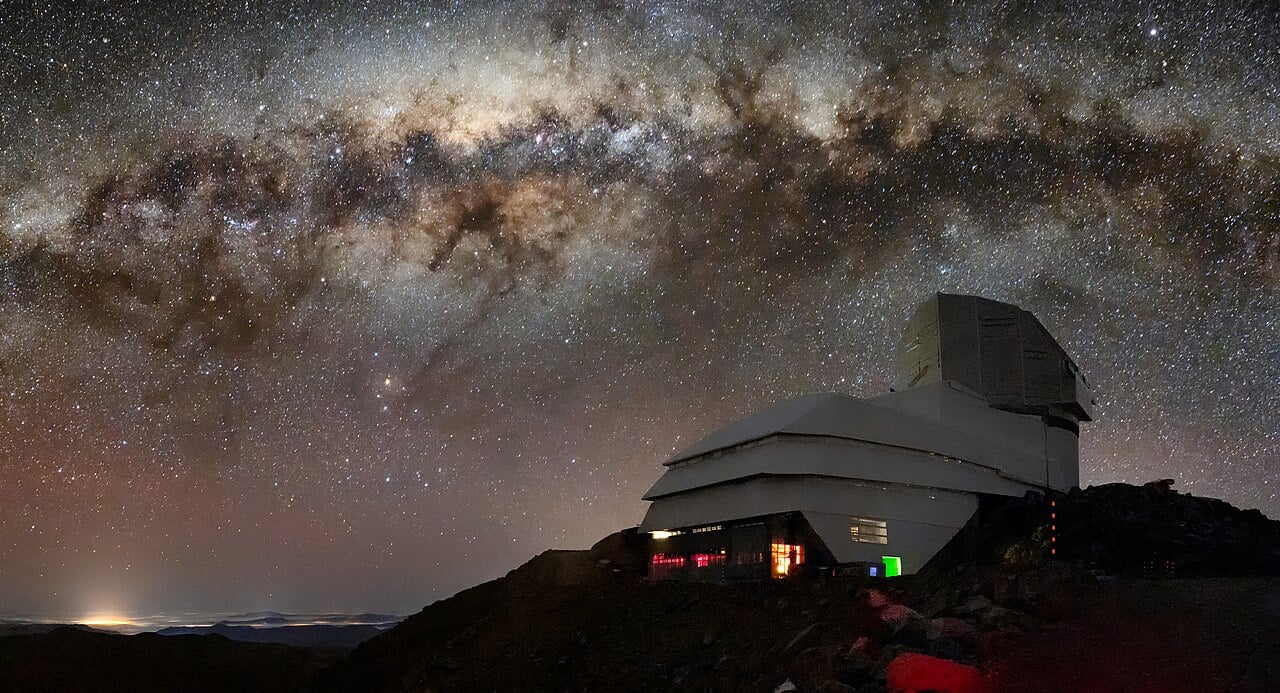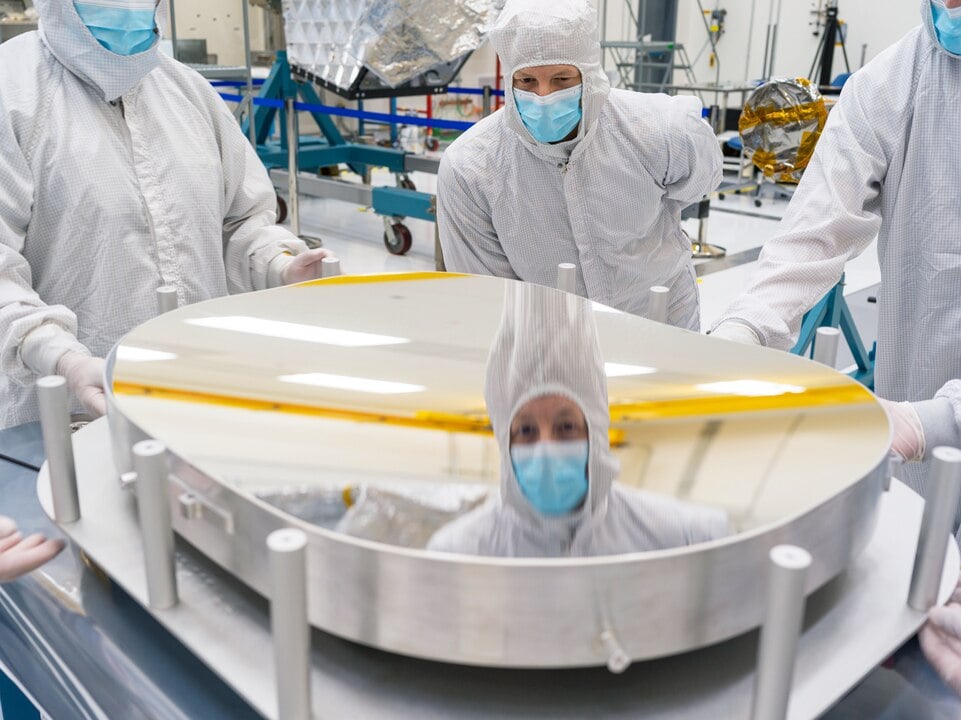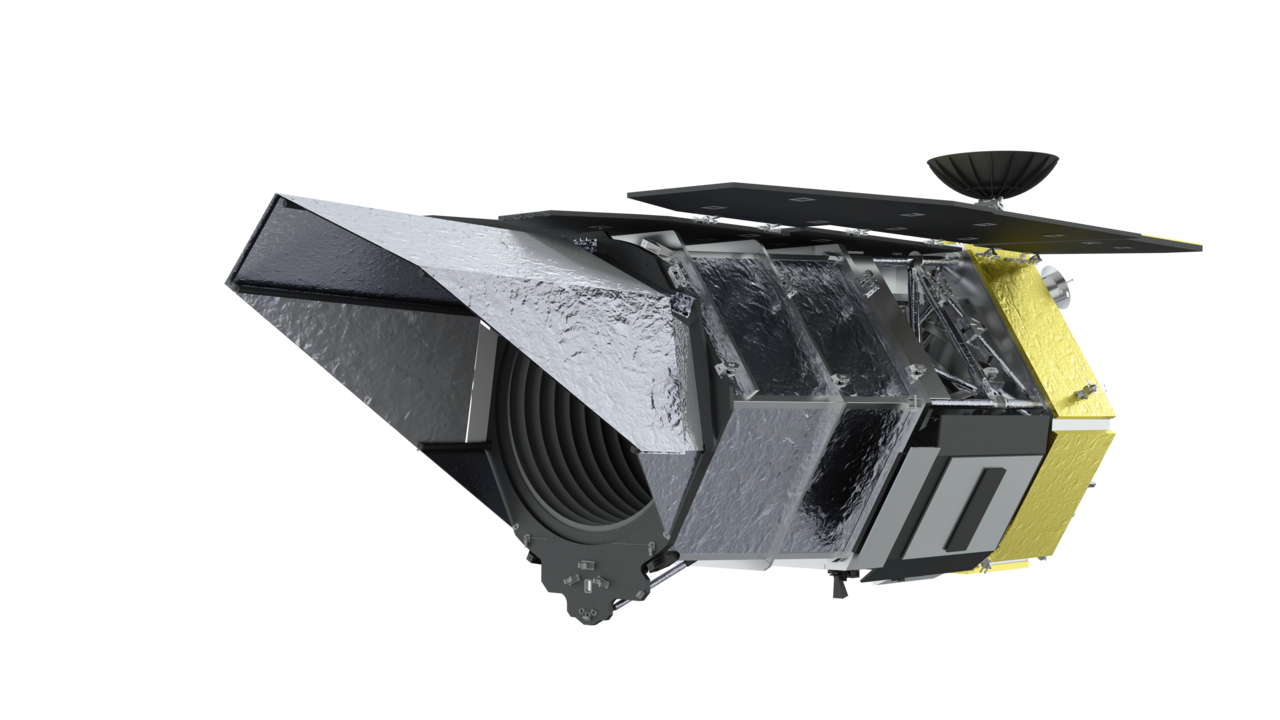When NASA’s Nancy Grace Roman Space Telescope launches in October 2026, it won’t just be peering into the distant universe to study dark energy and exoplanets. This powerful observatory will also serve as Earth’s newest guardian, helping scientists track and understand potentially dangerous asteroids and comets that could threaten our planet.
The Roman Space Telescope will position itself at the Earth-Sun L2 Lagrange point, a gravitationally stable location about 1.5 million kilometres from Earth in the opposite direction of the Sun. From this vantage point, the telescope will use its sensitive near infrared vision to study near Earth objects (NEOs), the asteroids and comets whose orbits bring them close to our planet.
Roman Space Telescope’s spacecraft bus at Goddard Space Flight Center, September 2024 (Credit : NASA)
What makes Roman particularly valuable for planetary defence is its ability to measure the physical properties of these space rocks with unprecedented precision. While other telescopes can spot asteroids, Roman will be able to determine their size, shape, composition, and exact orbital paths. This detailed information is crucial for understanding which objects pose real threats and which are harmless.
Roman won’t be working alone in this astronomical neighbourhood watch. It will join forces with two other major asteroid hunting missions to create a comprehensive planetary defence network spanning the electromagnetic spectrum. The Vera C. Rubin Observatory, already operational in Chile, uses visible light to scan the sky and is expected to discover over 100,000 new near Earth objects. Meanwhile, the upcoming NEO Surveyor space mission will observe in the mid infrared range, where asteroids glow with heat, potentially detecting between 200,000 and 300,000 NEOs, including some as small as 20 meters across.
 Vera C. Rubin Observatory and the Milky Way Galaxy (Credit : Rubin Observatory/NSF/AURA/B. Quint)
Vera C. Rubin Observatory and the Milky Way Galaxy (Credit : Rubin Observatory/NSF/AURA/B. Quint)
Each telescope brings unique strengths to the asteroid hunting team. Rubin excels at finding new objects across wide swaths of sky. NEO Surveyor can detect the thermal signatures of small asteroids that might be too faint to see in visible light. Roman, with its high resolution, near infrared capabilities, will provide the detailed follow up observations needed to truly understand these objects.
One of Roman’s most important contributions will be dramatically improving our knowledge of asteroid orbits. Current measurements of NEO trajectories will be enhanced by two to three orders of magnitude, meaning our predictions of where these objects will be in the future will become thousands of times more accurate. This precision is essential for determining whether an asteroid discovered today might pose a threat decades from now.
Roman will also work closely with NEO Surveyor to provide accurate size and brightness measurements of asteroids. By observing the same objects in different infrared wavelengths, the two telescopes can determine both how big an asteroid is and how reflective its surface is, key factors in assessing potential impact damage.
 NEO Surveyor’s mirror (Credit : NASA/JPL-Caltech)
NEO Surveyor’s mirror (Credit : NASA/JPL-Caltech)
Perhaps most intriguingly, Roman will be able to identify the compositions and spectral types of even the smallest near Earth objects. This information reveals what asteroids are made of; whether they’re rocky, metallic, or icy, something which affects both their potential impact effects and their value as future resources for space exploration.
To accomplish these goals, NASA will need to develop new data processing techniques specifically designed to extract information from images of fast moving objects. Unlike distant galaxies that appear stationary, asteroids streak across Roman’s field of view, requiring specialised software to track them and measure their properties accurately.
The timing of these three missions creates an unprecedented opportunity for planetary defence. Together, they will provide the most comprehensive census of potentially hazardous asteroids ever compiled. This knowledge is essential not just for protecting Earth from impacts, but also for understanding the population of small bodies left over from our Solar System’s formation.
Source : The Roman Space Telescope as a Planetary Defence Asset
